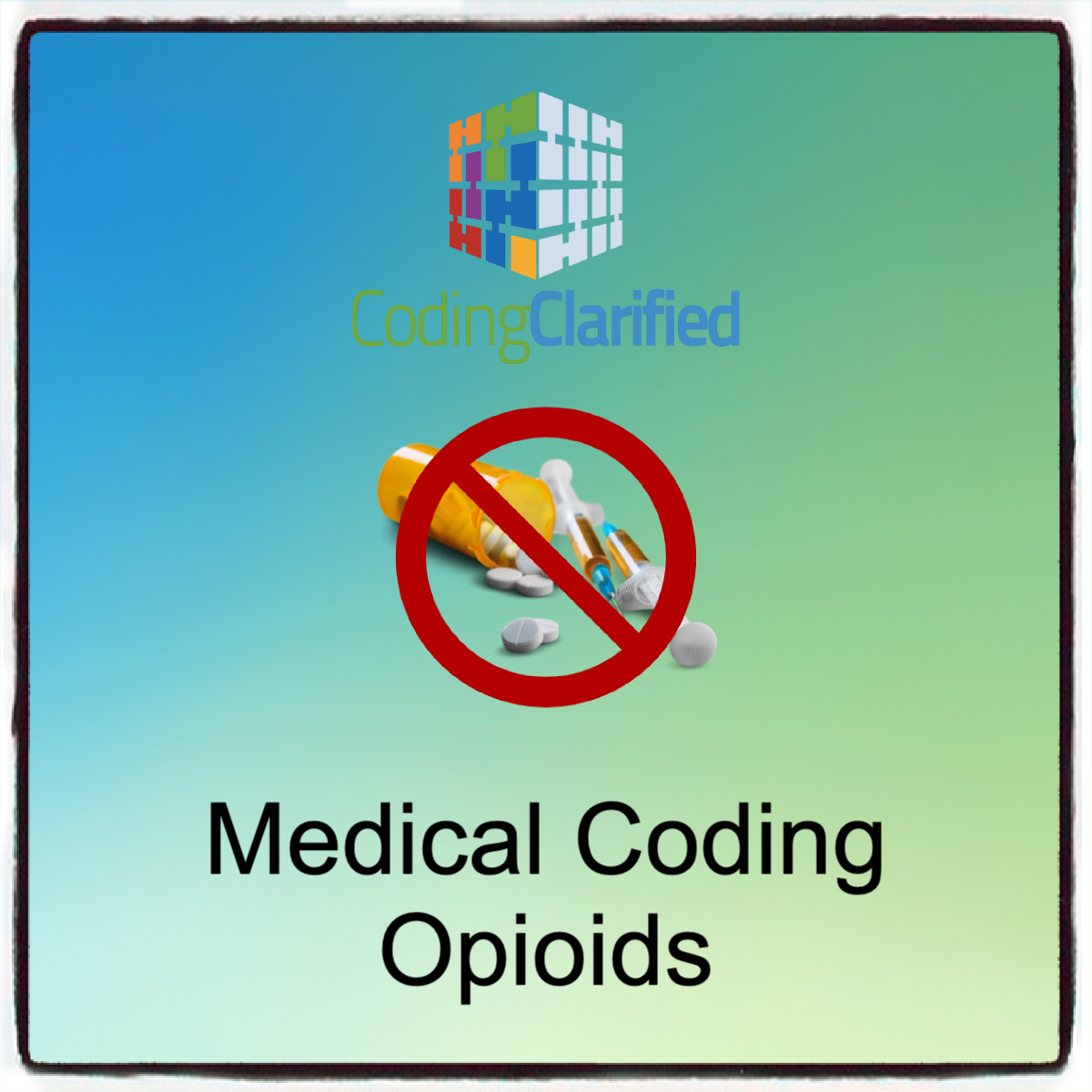Medical Coding Opioids Guidelines &
Opioids are commonly prescribed for pain management but are also associated with high risks of misuse, overdose, and addiction. Medical coding and billing for opioid prescriptions and related services must adhere to specific guidelines, especially as regulatory oversight continues to tighten. Here’s a detailed look at coding and billing practices for opioids:
Understanding Opioid-Related Diagnosis Codes
The ICD-10-CM (International Classification of Diseases, 10th Revision, Clinical Modification) system is used for diagnosing opioid-related conditions. When coding for opioid-related diagnoses, it’s important to be precise. Commonly used codes include:
-
F11 – Opioid use, including dependence and abuse:
-
F11.10 – Opioid abuse, uncomplicated
-
F11.20 – Opioid dependence, uncomplicated
-
F11.21 – Opioid dependence, in remission
-
F11.23 – Opioid induced psychotic disorder
-
-
Z79.891 – Long-term (current) opioid use (for chronic pain management patients who are prescribed opioids long-term but not addicted)
Make sure to select the most specific code based on the patient’s condition. For example, opioid dependence or abuse should be specified based on the patient’s diagnosis and history. Also, be mindful of opioid-induced disorders, such as opioid-induced constipation or psychosis.
Substance Abuse Disorders https://codingclarified.com/icd-10-coding-for-substance-use-disorders/

CPT® Codes for Opioid-Related Services
The CPT® (Current Procedural Terminology) codes include those for procedures related to the treatment and management of opioid-related issues. Key codes are:
-
99201-99215 – Office or other outpatient visits (used when treating opioid-related conditions or monitoring opioid therapy)
-
99201-99205: Used for initial evaluations.
-
99211-99215: Used for follow-up visits and ongoing opioid therapy management.
-
-
G0431 – Drug screening (for monitoring opioid use)
-
G0480-G0483 – Drug testing, including opioids, with more specific codes for test panels.
-
H0015 – Alcohol and/or drug treatment services, outpatient, non-hospital setting (if opioid addiction treatment is provided).
When billing for opioid management, ensure that the correct level of service is billed based on the complexity of the visit, including whether it’s for pain management, opioid therapy initiation, or ongoing opioid use monitoring.
Opioid Treatment Program (OTP) Coding
For opioid treatment programs (OTPs), which typically include medication-assisted treatment (MAT) such as methadone or buprenorphine, special billing codes are used:
-
H0020 – Methadone administration (used for outpatient treatment of opioid addiction).
-
H0033 – Medication management for opioid treatment.
-
G2080 – Pharmacologic management of opioid dependence (non-methadone).
-
G2081 – Buprenorphine administration under the supervision of a healthcare provider.
Billing for Opioid Overdose or Emergency Care
When billing for opioid overdose cases or emergency care related to opioids, use these codes:
-
E66.01 – Opioid overdose
-
T40.0X – Poisoning by opiates and related narcotics
-
T40.4X – Poisoning by methadone
-
T40.6X – Poisoning by other synthetic narcotics
Emergency room visits related to opioid overdose will generally be billed with emergency care codes (e.g., 99281-99285) depending on the level of care required.
Documentation Tips for Opioid-Related Encounters
Proper documentation is critical when coding opioid prescriptions and related care. Some key tips for documentation:
-
Medical Necessity: Always document why opioids are being prescribed, especially for chronic pain. Document the patient’s pain level, how it impacts their function, and why opioid therapy is necessary.
-
Consent and Risk Assessment: Ensure there’s documentation of informed consent and risk assessments for opioid use, including discussions of potential side effects, addiction risks, and alternative pain management options.
-
Monitoring and Follow-up: Include information on the patient’s follow-up care, adherence to opioid therapy, and any signs of misuse or abuse.
-
Drug Testing: If performing drug screenings, document the reason for the test and the results. Coding for drug testing (e.g., G0431) should match the reason for testing.
Payer-Specific Guidelines for Opioids
Different payers may have additional or specific requirements regarding opioid prescriptions and related services. Many commercial insurers and Medicare/Medicaid programs now impose restrictions or require prior authorization for long-term opioid prescriptions. Be sure to check:
-
Medicare’s Opioid Prescribing Policies: This includes guidelines such as limiting the quantity of opioids and ensuring appropriate use for chronic pain management.
-
State Laws and Regulations: States may have specific restrictions on opioid prescribing and may require additional documentation for billing and reimbursement.
Always stay updated on payer-specific guidelines to ensure accurate billing and reimbursement.
Tips for Avoiding Billing Errors
-
Correct Diagnosis Codes: Ensure you are using the most accurate and specific ICD-10-CM codes related to opioid use and management.
-
Accurate Medication Management Codes: Correctly use CPT codes for opioid treatment services and follow all payer guidelines for opioid-related claims.
-
Patient’s Prescription History: Keep a record of all prescribed opioids and any prior authorization documents required by insurance carriers.
-
Comply with Abuse Prevention Guidelines: Some payers may require documentation of opioid risk assessments and prescription monitoring program (PMP) usage. Be sure to include those documents when submitting claims.
Billing and coding for opioid prescriptions and related care require accuracy and adherence to both federal and state regulations. Providers must ensure they are using appropriate ICD-10 and CPT codes, documenting medical necessity, and following payer-specific rules to prevent errors and potential audits. By staying informed and proactive in documentation and coding, you can ensure proper reimbursement and avoid compliance issues related to opioid prescriptions.
CMS https://www.cms.gov/medicare-coverage-database/view/article.aspx?articleId=59717&ver=3
National Library of Medicine https://www.ncbi.nlm.nih.gov/books/NBK559382/table/sb258.tab4/

